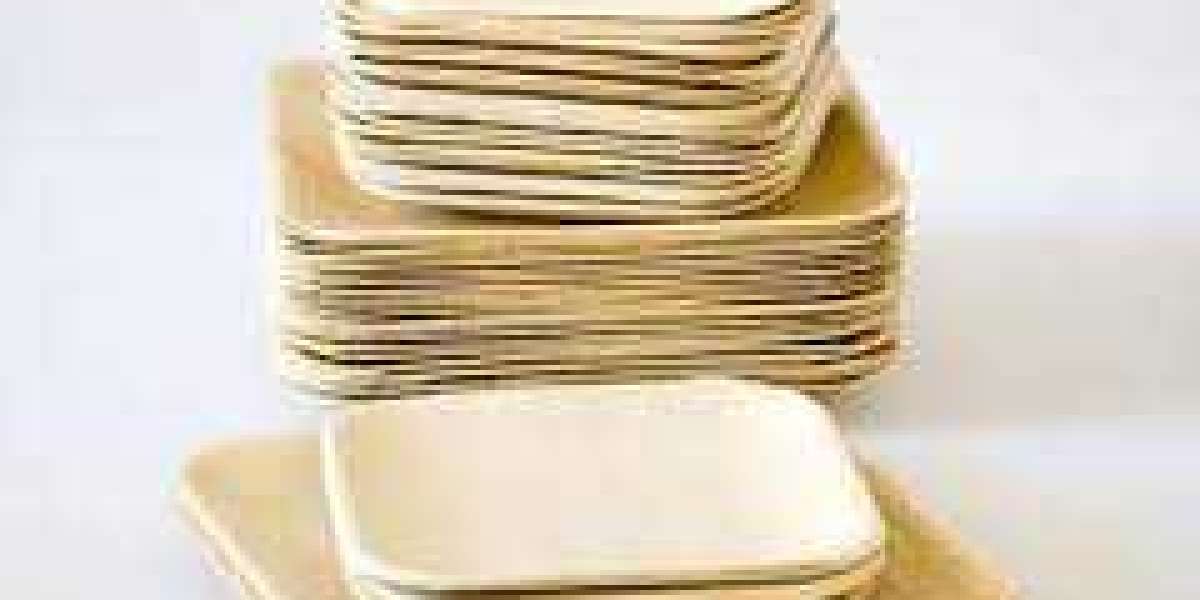In recent years, environmental consciousness has surged, pushing people and businesses toward adopting eco-friendly alternatives to traditional plasticware. Among these alternatives, bagasse plates and disposable paper plates have become increasingly popular. Both options offer convenience, strength, and a sustainable solution to single-use tableware. Let’s dive into the details of these two options and why they are transforming the dining industry.
What Are Bagasse Plates?
Bagasse plates are made from sugarcane pulp, specifically from the residue left over after extracting juice from sugarcane. This natural material is processed into a pulp, molded into plate shapes, and dried to form a durable and sturdy product. Bagasse is an ideal material for making disposable plates because of its strength and biodegradability.
Advantages of Bagasse Plates
- Eco-Friendly: One of the biggest advantages of bagasse plates is their environmental friendliness. Unlike plastic plates, which can take hundreds of years to decompose, bagasse plates are fully biodegradable and compostable. This makes them a great alternative for anyone looking to reduce their carbon footprint.
- Durability: Bagasse plates are surprisingly strong and can hold both hot and cold food items without losing shape or leaking. Their resistance to oil and moisture makes them ideal for serving curries, rice, and other moist foods.
- Microwave and Freezer Safe: Bagasse plates are designed to withstand high temperatures, making them microwave and freezer-safe. This versatility adds to their appeal, particularly for foodservice businesses that need to reheat or store food before serving.
- Renewable Resource: Sugarcane is a fast-growing crop, and the use of its byproduct, bagasse, is an excellent way to reduce waste and support sustainable practices. Additionally, bagasse is compostable, meaning it breaks down quickly and doesn’t pollute the environment.
- Versatility: These plates come in various sizes and shapes, making them suitable for a wide range of occasions, from casual picnics to formal events. They can hold snacks, appetizers, main courses, and desserts.
What Are Disposable Paper Plates?
Disposable paper plates are one of the most common alternatives to plastic plates. They are made from paper pulp, often sourced from recycled paper. Paper plates have long been used for quick meals, casual gatherings, and outdoor events because of their convenience and low cost.
Benefits of Disposable Paper Plates
- Affordable: One of the primary reasons disposable paper plates are so widely used is their affordability. Compared to reusable dinnerware, paper plates are budget-friendly, making them an excellent choice for large gatherings or events on a budget.
- Lightweight: Paper plates are light and easy to handle. Their lightweight nature makes them convenient for outdoor events, such as picnics, barbecues, and camping trips, where portability is key.
- Variety of Designs: Disposable paper plates are available in a wide array of designs, colors, and sizes. Whether you’re hosting a formal event or a casual party, paper plates can be found in styles that complement any occasion.
- Biodegradable: Like bagasse plates, many paper plates are made from biodegradable materials. This makes them a preferable option to plastic plates, as they will break down naturally in landfills, reducing the environmental impact.
- Customization: Paper plates can be easily customized with prints, logos, and branding. For businesses and events, customized paper plates can serve as a promotional tool or help create a unique dining experience for guests.
Comparing Bagasse Plates and Disposable Paper Plates
While both bagasse plates and disposable paper plates offer sustainable alternatives to plastic, they do have some key differences.
- Material:
- Bagasse plates are made from sugarcane pulp, while disposable paper plates are made from wood pulp or recycled paper.
- Bagasse plates tend to be more durable than paper plates and can handle hot and oily foods without losing integrity.
- Biodegradability:
- Both options are biodegradable, but bagasse plates decompose faster than paper plates, making them a more sustainable choice in the long run.
- Strength:
- Bagasse plates are stronger and more resistant to moisture, which makes them ideal for serving saucy or wet foods, such as curries and stews. In comparison, disposable paper plates may weaken when exposed to high moisture content.
- Price:
- Paper plates are typically more affordable, making them an ideal choice for budget-conscious consumers or large events. Bagasse plates, while slightly more expensive, offer additional durability and environmental benefits.
Conclusion: A Greener Future with Bagasse and Paper Plates
When looking for sustainable alternatives to plastic, both bagasse plates and disposable paper plates are excellent choices. Each option has its own set of advantages, making them suitable for different needs and occasions. As consumers become more environmentally conscious, products like bagasse plates and disposable paper plates will continue to play a crucial role in reducing waste and promoting sustainability.
By switching to these eco-friendly alternatives, individuals and businesses alike can contribute to a cleaner and greener planet while still enjoying the convenience and practicality that disposable tableware offers.











